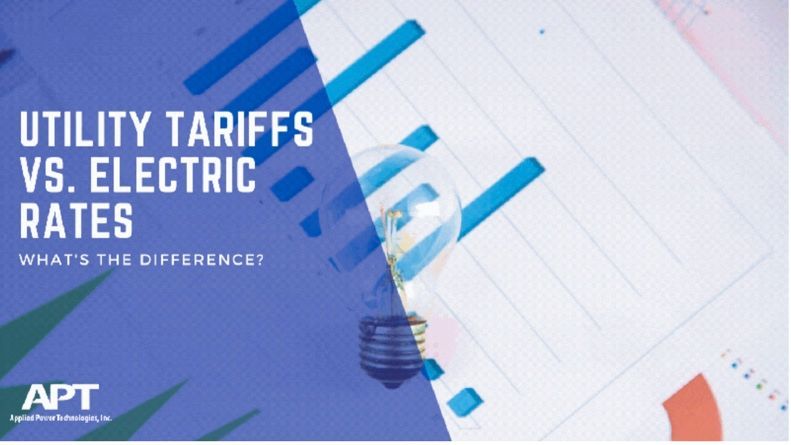Utility Tariffs vs. Electric Rates | What’s the Difference?

Are Electric Utility Rates and Tariffs the Same Thing?
NOPE – Not even close! While electric rates and tariffs often end up in the same discussion, they aren’t one and the same. Understanding both is the first step in taking control of your utility bill.
Electric Rates vs. Tariffs
Electric Rates

Tariffs
Tariffs are a collection of electric rates and other charges applied per the specific definitions of the tariff to calculate your final utility bill. For example, the tariff defines service charges, calendar dates like holidays, time of use periods, or consumption tiers.

Types of Tariffs
APT’s home office’s local utility Pacific Gas and Electric (PG&E), has over 70 tariffs covering residential, commercial, agricultural, and industrial customers. Despite a large number of tariffs, there are recurring categories: General, TOU (Time-of-Use), and Interruptible.
General Tariffs charge per unit rates based on consumption and may increase (tiers) based on how much you use. These are how most residential tariffs are structured.
TOU (Time-of-Use) tariffs charge different rates based on the calendar date, time of day, and even time of year or season. Time of day typically is broken down into peak and off-peak hours.
- Peak Hours are when everyone is using electricity, and so the electric rate is higher.
- Off-Peak Hours are when few consume electricity, so the electric rate is low.
Interruptible Tariffs apply to customers with interruptible loads. These include customers who can reduce their consumption during high-demand periods and or emergencies. For instance, a great example would be a quarry that crushes rock or processes materials. Therefore, if the cost of energy exceeds the cost of the material, they stop processing and use stockpiled material.
Take Control of Your Utility Bill
APT’s RECIPE Analytics platform uses the same tariff and electric rate to calculate the bill. Moreover, RECIPE lets customers forecast, accrue, and reconcile their utility bills to control costs.
APT works closely with customers to understand their specific tariff and electric rates. We subsequently implement a power monitoring infrastructure to measure consumption and demand.
In short, understanding your tariff and electric rates is the first step in taking control of your utility bill. APT helps clients take that first step to control costs.

Contact









